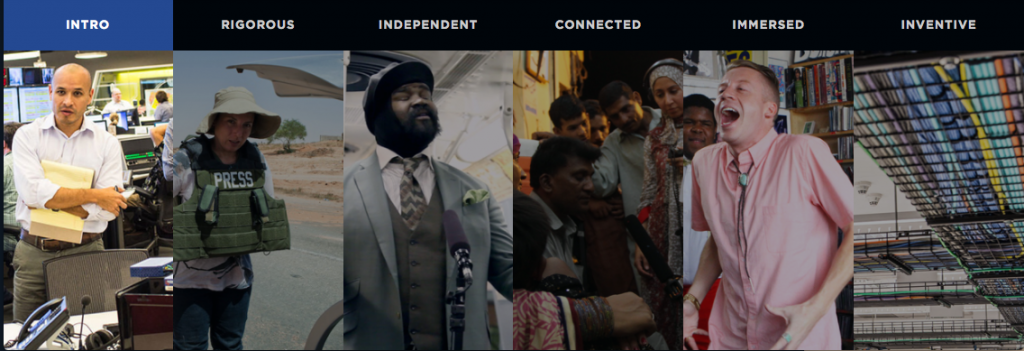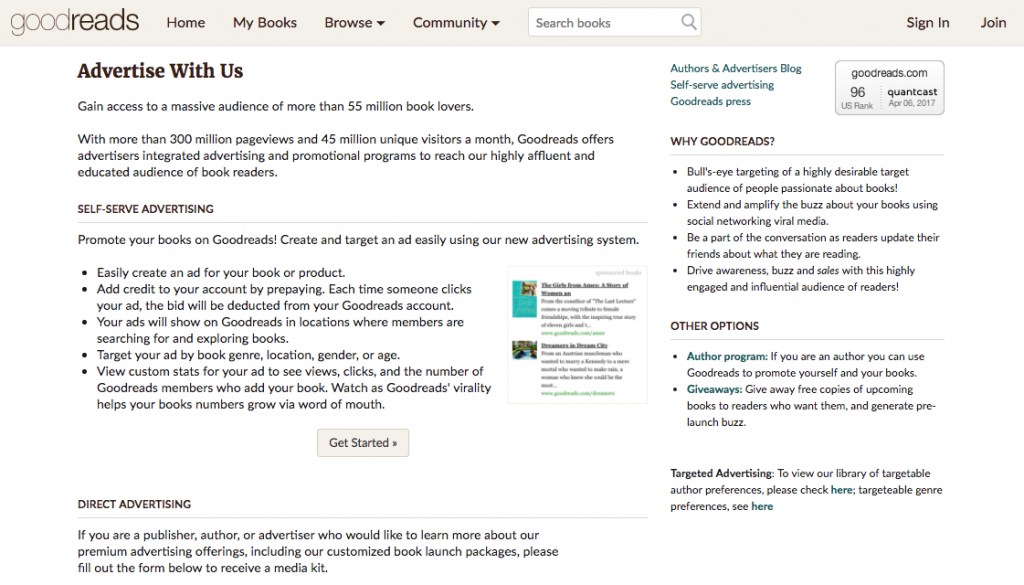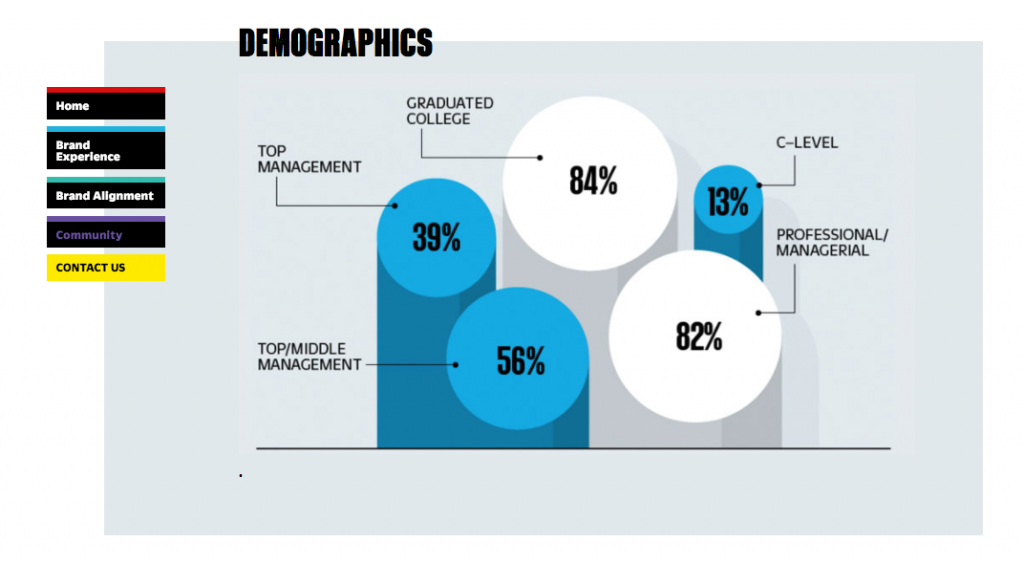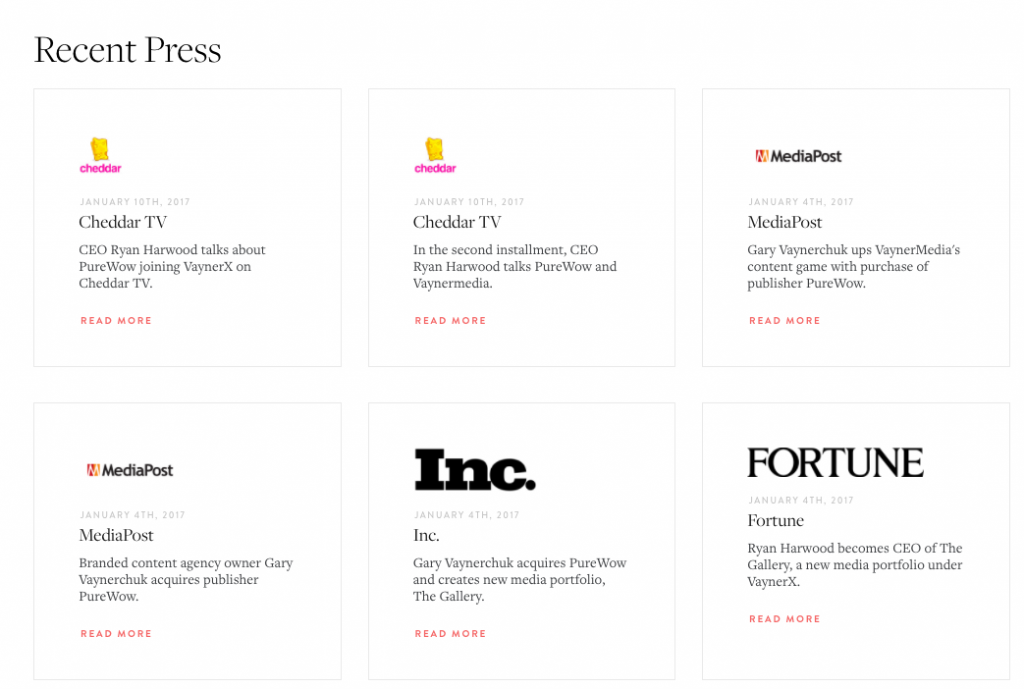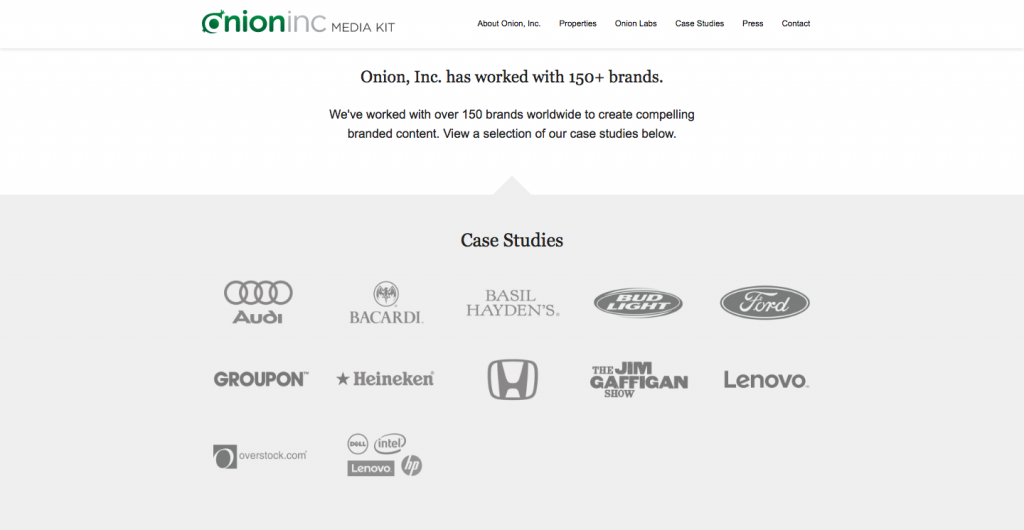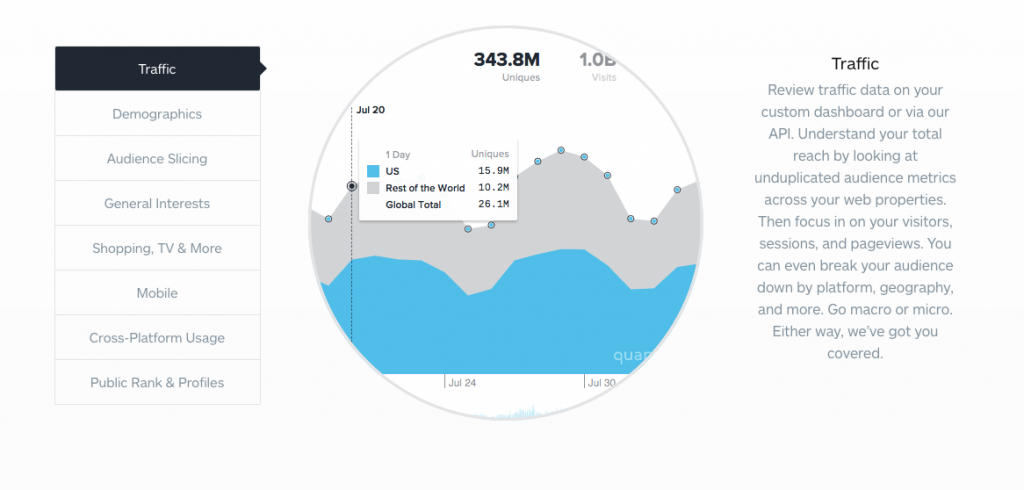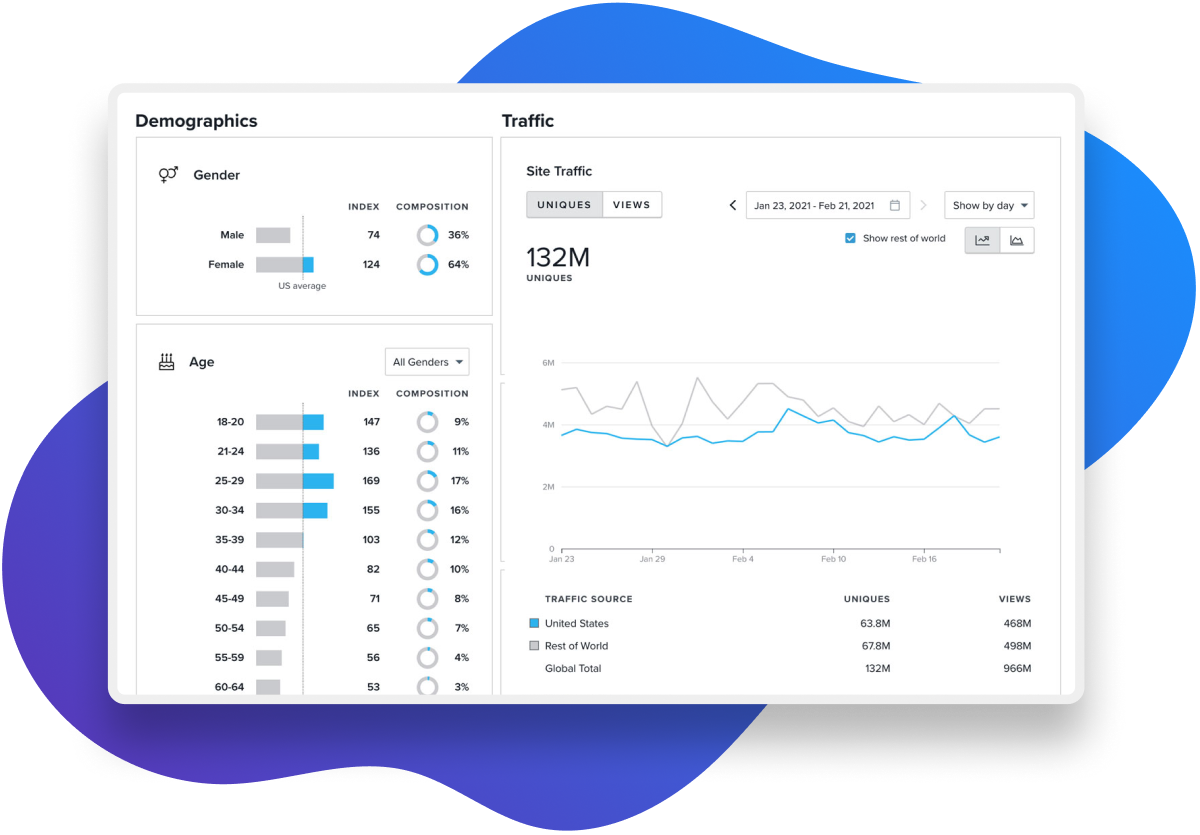
Get Started With Quantcast Measure
Quick and understandable audience insights.
Since 2006, Quantcast has helped its customers sharpen their advertising efforts, create focused content and product strategies, and identify the right business partners. We’ve found the patterns that show how publishers and brands can set themselves apart from the competition.
Our most successful publishing partners and brands typically have two things:
- A detailed understanding of their audience metrics and demographics
- An excellent media kit
Of course, they also had great products, teams, and content. But what caused these businesses to blossom was having a well-crafted media kit that brought those products, teams, and content to their audiences.
Unfortunately, many brands and businesses often don’t invest in creating top-notch media kits. And those that do often struggle to communicate their brand properly.
In today’s post, we show you how to make a media kit that converts. If your company already has a media kit, bravo — but read on and we’ll show how you can improve it.
What is a Media Kit?
A media kit, also sometimes referred to as a press kit, is a page or downloadable PDF on your website that helps visitors better understand who you are. Many brands and publishers publish elements their press kit on their website’s About page, Advertise With Us page, or Press page. Despite them often being used interchangeably, it’s important to know the difference between them.
Some journalists and public relations professionals also reserve the term “media kit” to refer only to web pages or PDFs that include high-quality photos, logos, etc. However, it’s generally acceptable to use “press kit” and “media kit” interchangeably in most professional contexts. That being said, a press kit is designed to attract press opportunities, whereas media kits are tailored specifically to sell advertising.
Just as anyone who wants to learn more about your company would likely read your About page, a media kit gives your visitors additional context so they can better understand who you are and what you offer.
Here are just a few types of visitors who might find your media kit useful and why.
Your Readers and Customers
Whether you’re a medium-sized publisher with hundreds of thousands of readers or a clothing company who specializes in selling hats, your fans and customers often want to learn more about your company and brand.
Current and Potential Advertisers
A media kit that features key company facts, awards, and testimonials is a great way to build trust with your current clients as well as nudge potential clients into giving you and your services a try. A well-crafted media kit can get the attention of advertisers, brands, or ad agencies who might want to work with you.
Journalists and PR Professionals
One of the functions of a media kit is to help your company generate press. They also make it easy for journalists and public relations professionals to cover your company or product. They won’t have to spend hours searching for the information they need, because the latest facts and figures are right there — in the media kit posted directly on your site.
Investors
While investors won’t write you a check based solely on a well-crafted media kit, it’s a starting point of interest for many investment firms. Having an up-to-date media kit page with metrics showing growth will certainly count in your favor if you’re looking to raise capital.
Potential Employees
Hiring great talent is more difficult than ever, especially in today’s hyper-competitive business world. But it’s necessary to get top talent if you want your company to succeed in our ever-changing business landscape. To help land those top achievers who like to do their research, consider providing more information in your media kit for those.
Now that you know the main players in your audience, take a look at these key components of a well-built kit.
Media Kit Essentials
- A Brief History of Your Company
Your media kit should include a brief history of your company and the story behind it. Your goal is to provide enough context for your audience to know who you are, so don’t overwhelm your readers with every exhaustive detail.
- Company Vision and Values
In addition to providing a brief history of your company, you definitely want to make your brand’s vision and values clear.
Take a look at Arianna Huffington’s latest venture, Thrive Global, and how she shares her company’s vision on her About page:
This vision statement paints a clear picture of what Thrive is striving to accomplish. It provides readers the opportunity to see if the company’s mission resonates with them.
When you share your company and vision, also be sure to use the style, language, and tone your audience responds well to. NPR does an amazing job of telling their company’s story and how they’ve built a passionate audience of millions from all around the world — and they do it using a media kit that’s both detailed and interactive.
[NPR‘s interactive page showing their company story]
- FAQs
The FAQ section is essential to your media kit because it gives you an opportunity to perfect your brand messaging while also providing your audience with valuable information.
Provide specific details in your FAQs so new visitors will better understand you and your brand. And be sure to include all commonly asked questions from your readers, journalists, and potential clients.
Publishers, be sure you don’t skip this step! FAQ pages are especially important as you continue to grow your readership.
- Logos
Upload a variety of logos for anyone who wants to share your content or write a story about your brand. Be sure to include a variety of image sizes so readers can easily share them across social media, email, newsletters, and other publications.
Follow these tips to provide great images:
High-resolution photos: Ideally, you want all your photos to be at least 300 DPI (dots per inch), which allows the images to be printed in high quality. Low-resolution photos are around 70 DPI and will look grainy and pixelated when printed. Be sure to include the photo extension .jpeg (or .jpg) or .png.
Image in multiple sizes: Give readers a multitude of image sizes so they can share them on any platform. Here are four image sizes you’ll definitely need:
- Instagram: 1080 x 1080
- Facebook: 940 x 788
- Twitter: 1024 x 512
- LinkedIn: 550 x 375
Vector images: As a publisher, how many outdated or low-quality logos have you seen floating around? To avoid this happening with your company logo, post it as a vector image alongside the other graphics on your media kit page.
There are a couple of benefits to offering a vector image:
- Journalists and anyone else perusing your media kit can easily resize a vector graphic to their liking without losing quality
- By providing your audience with the best images of your brand, you increase your ability to control your brand and its online image
- Contact Info
Media kits are designed to generate advertising opportunities, so be sure to include a clear point of contact on your page for potential advertisers who wish to reach out. This can be done with a contact form or by providing a plain text email address, or phone number.
- Demographics
Including the demographics of your readership and/or customers is helpful for those looking to learn more about your company. The more specific you’re able to get with your demographic data the better. You want those looking to work with you to know exactly who your audience is.
[Quantcast partner Yelp’s demographics]
Knowing your audience demographics is especially important when you want to attract potential ad clients for your publication. Demographics are essential to convincing prospective customers and clients that your audience is a good fit for their brand and messaging.
[A simple yet powerful advertising page in the Goodreads media kit showing why advertisers would benefit from a partnership]
[Metrics shared by Fast Company — beyond the typical demographics often shared with advertisers]
Supercharge Your Media Kit
With the basics of your media kit in place, you’ll want to add a few more elements to give it the hyperboost it needs to zoom your business ahead. These suggestions won’t apply to every business, so take what applies to your audience and forgo the rest.
Additional High-Resolution Photos
While you should almost always include logos in your media kit, it often helps to add additional high-resolution photos as well.
Again, this makes it easy for anyone who needs them to use high-quality images rather than resort to whatever low-quality stuff they’ll pull from their Google search results.
Don’t know what photos to include? Consider providing photos of your:
- Product
- Office and/or building
- Team
- Company retreats
- Team outings
Any photo that’s reflective of your brand’s mission is a good bet. When you add photos with a human element, like company retreat or team outing photos, you give prospective employees a feel for your diversity and culture.
Specific Points of Contact
Having a basic point of contact on your media kit page is a must, but you can take it a step further by giving a specific point of contact that maps to your audience’s needs.
Here are a few examples:
- Looking to be an ad partner? Please reach out to susan@brandname.com.
- Looking to work for us? Please reach out to john@brandname.com.
- Looking to pitch a story for our publication? Please reach out to mary@brandname.com.
This makes things easier and ensures inquiries are routed to the right people, and it saves both time and money.
Social Media
Make sure visitors can engage with your brand easily — display your active social media profiles in your media kit.
One important note on social media channels: only link to your company’s active profiles. If no one posts on your company’s Instagram account, for example, there’s no need to send your audience there.
Articles and Press
A media kit page is a great opportunity to highlight any articles or publications your brand has been featured in. Include four or five articles that give your audience a clear idea of the value your brand provides.
[Easy-to-find publications in the PureWow media kit]
Highlight Clients and Partners
Add some of your big name clients or partners to your page — this gives your company clout and can benefit your clients and partners through added exposure. Including clients and partners in your media kit also makes it easier for journalists to reference your company and customers without having to do any additional research.
[Relevant case studies and a great value statement in The Onion‘s media kit]
Common Media Kit Mistakes
The mistakes you make in your media kit can cause your efforts to backfire. Here are some of those mistakes and how you can avoid them.
Not being specific enough: The most common mistake, especially with publishers, is not being specific enough with readership demographics. Use focused metrics to understand your audience and effectively address it so you can take advantage of better partnership and advertising opportunities.
Unprofessionally produced: For your media kit to be effective, it has to be put together well. If it’s riddled with typos and broken links, you’ll quickly leave a bad impression with potential readers and partners. While your media kit doesn’t need to be perfect by any means, be sure you put your best foot forward.
Outdated: An outdated media kit is potentially more harmful to your brand than not having one at all. Once you release your page into the wild, make it a priority to update it at least every few months.
Too bloated: Many brands and publishers convey messages that aren’t concise enough. Be detailed in your media kit, but don’t overdo it. Your media kit should be detailed but easy to consume.
How Quantcast Can Help
Creating a media kit that will make your company stand out starts with knowing your numbers and sharing them in a meaningful way.
At Quantcast Measure, we offer the insights and data you need to truly understand your audience. No more guesswork — only the tremendous opportunity to wow your clients and advertising partners with pertinent and useful demographic data.
Here’s how we can help.
Share More Than Nontraditional Metrics
In most media kits today, you might see publishers sharing their top-level demographic data, and it’s usually the standard stuff showing age, sex, location, etc. And while some data is better than none, the traditional demographic measurements are no longer enough, especially in the eyes of brands and advertising partners.
But with our cutting edge technology at Quantcast, there’s a better way.
As Nick Lanzafame, Head of Strategic Insights and Analytics at BuzzFeed, says, “We’re seeing a shift right now in the type of audience information brands and advertisers want to look at. We’re moving away from the classic demographic information.”
Imagine being able to share industry-leading, accurate data on how your customers really behave.
Imagine being able to say which cars your audience likes to drive or what shows they watch.
The result? Brands and advertisers will come happily knocking on your digital door.
Include Thin-Sliced Data with Hyperfocus
But it gets better. With our content labels, you can easily focus on a unique slice of your audience to get a truly comprehensive snapshot of how it behaves.
You can share this data with brands and advertisers to educate them about the audience on specific sections of your site, which of your authors get read most by which readers, and even the specific audience for certain products.
Instead of worrying about seeing a return on your ads, you can feel confident in their ROI because you have the metrics show it.
Now that’s what we call an upgraded media kit.
Make Your Media Kit Count
For publishers and brands, the business landscape is more competitive than ever. There are thousands of companies vying for a limited about of attention, and many publishers are struggling to adjust.
But the publishers and brands who continue to succeed are the companies that always look for ways to add value and over deliver to their clients, audience, and partners. The best way to do that is to truly understand your audience.
At Quantcast Measure, we believe that the right data and metrics can revolutionize the way you run your business.

Get Started With Quantcast Measure
Quick and understandable audience insights.


